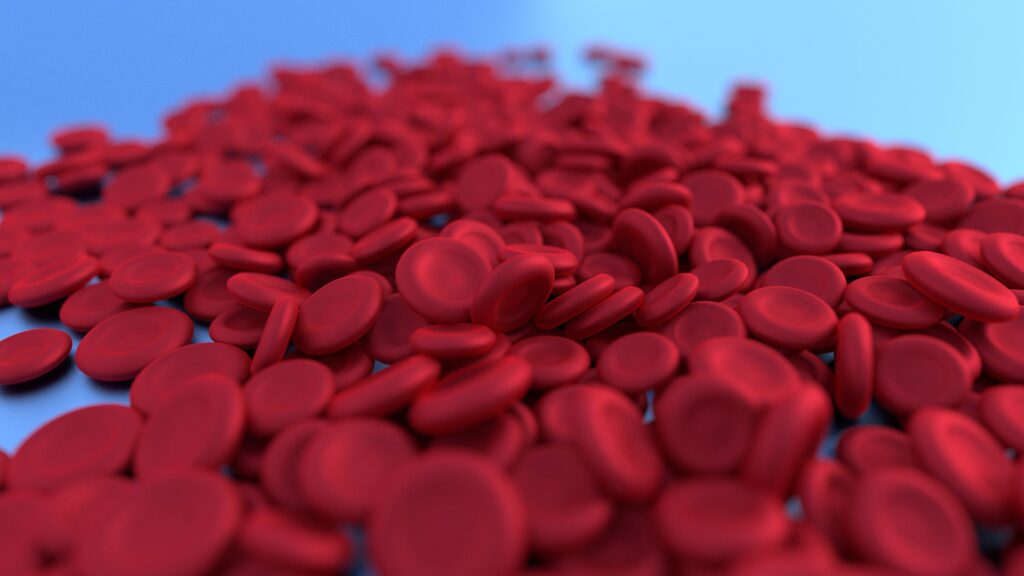Words By Nisal Karunaratne
The concept of ‘artificial blood’ has been around some centuries, ever since English physician William Harvey was the first to recognise and name the importance of ‘blood and circulation’ in the human body in 1616. In the medieval ages, this was known as the theory of the ‘4 humors’, that the main substances that were thought to make up the human body was: black bile, yellow bile, blood, and phlegm.
The ‘4 humors’ was first coined by Hippocrates, who linked each humour to an element in the universe. For ideal health, they have to be in perfect balance. When this balance is lost, it leads to sickness. Therefore, medieval scientists and doctors widely believed that by changing or replacing the composition of the humors with substances such as wine, milk and honey, diseases/personality disorders could be cured. As usual, this was mired by controversial and disappointing experiments until the Germ theory was published by Louis Pasteur in 1861.

The initial quest for a source of artificial blood was prompted by the blood shortage crisis in World War I and II which lead to many avoidable deaths and patients getting infected with HIV during blood transfusions in the 80s. Although, there has been significant improvements in blood screening, collection and storage, blood still need to be cross-matched and discarded after a couple of weeks. If only there was a solution where blood was immediately available, completely safe, and ideal for use during emergencies.
Many artificial substitutes for blood developed today which includes Perfluorochemicals, Haemoglobin-based Oxygen Carriers (HBOCs) and cross-linked Polyhaemoglobins. These substitutes were only designed to serve one purpose which is to carry oxygen. This approach was deemed safe and effective as this gives a simple starting point where it has the potential to save someone’s life as well as building a strong foundation for the addition of other functions such as coagulation and immunity later down the line by merging with Nanotechnology.
Perfluorochemicals are inert organic compounds found in large bodies of water such as rivers and lakes, that can dissolve approximately twice more oxygen than human blood plasma. As well as being completely free of biological material so there is no infection risk, they are relative cheap to produce in mass quantities. Despite having good oxygenation properties, it does not readily dissolve in blood plasma and therefore must be combined with aqueous/lipid compounds. This generates an emulsion of extremely small particles which can be injected into the patient. Some companies have already developed blood substitutes based on Perfluoroctylbromide and Perfluoro-dichoroctane combined with egg yolk lecithin (surfactant). Phase II clinical trials are currently being carried out on surgical patients, in hope of delaying the need for use of autologous blood transfusions which is required by Jehovah’s Witnesses who cannot accept donor blood.
Haemoglobin-based oxygen carries (HBOCs) utilize the same haemoglobin molecule, but it is not contained within a membrane. The absence of plasma membrane solves cross-matching and typing issues, saving time and allowing immediate transfusion. HBOCs can be stored for many years, compared to six weeks with human blood, making HBOCs ideal for use in locations where access to blood banks a rare commodity such as: remote locations, disaster sites, and war zones. Although HBOCs sounds promising, haemoglobin on its own is susceptible to oxidation, degradation, and conversion into toxic molecules such as bilirubin and inactive metmyoglobin. Furthermore, oxygen delivery using a cell-free carrier instead of RBCs causes idiopathic alterations in blood flow in arterioles and capillaries.
Major advances have been made in overcoming both of these problems such as cross-linking haemoglobin with enzymes for oxidative protection or modifying the molecular structure of Hb. Bifunctional agents are used for chemical cross-linking or modification using recombinant DNA technology to form Polyhaemoglobin. The cross-linked haemoglobin molecules are far more stable and shown to have greater oxygen releasing capabilities under low pO2 compared to RBCs. Another additional advantage of using blood substitutes, is that it can be pasteurized, filtered and chemical-cleansed to make them sterile, helping us to combat transfusion acquired diseases such as HIV and Hepatitis C
A number of companies have developed many blood substitutes which have shown immense potential and are currently utilized in clinical trials:
Northfield Laboratories Inc has developed Pyridoxalated glutaraldehyde cross-linked human haemoglobin. Currently in phase III trial, where 5L was infused into surgical patients during operations.
Hemosol Corp developed O-raffinose cross-linked human Polyhaemoglobin. Currently in phase II clinical trials
Baxter International developed Diaspirin cross-linked human haemoglobin. Currently considering for use in Phase III clinical trials with a large number of surgical patients.
There is strong reason to believe that within the next couple years, some of these products will soon become available for clinical use with many experts in the field hypothesizing that HBOCs will perform their specialized function even better than RBCs. A third-generation blood substitute is also being developed which utilizes artificial RBCs. Two potential methods are to either to encapsulate haemoglobin and anti-oxidative enzymes inside lipid vesicles, or biodegradable polylactic acid membrane nano-capsules via the use of Nanotechnology.
University of Washington in St Louis went further with this and developed a ‘powdered blood form’ called Erythromer. It consists of extracting haemoglobin from RBCs and coating it with an ‘Immune Silent’ synthetic polymer. The polymers unique properties make Erythromer compatible with any blood group and allows control oxygen delivery in relation to blood pH. The powdered form allows Erythromer to be freeze dried at room temperature and can be stored for a year. When needed the substitute just needs to be dissolved in sterile water and is ready for transfusion. The lab trials of Erythromer on rats and mice have already proved successful and human trials are being planned.
Interesting articles to read
https://www.ncbi.nlm.nih.gov/…/pdf/cmbd-9-2016-033.pdf

